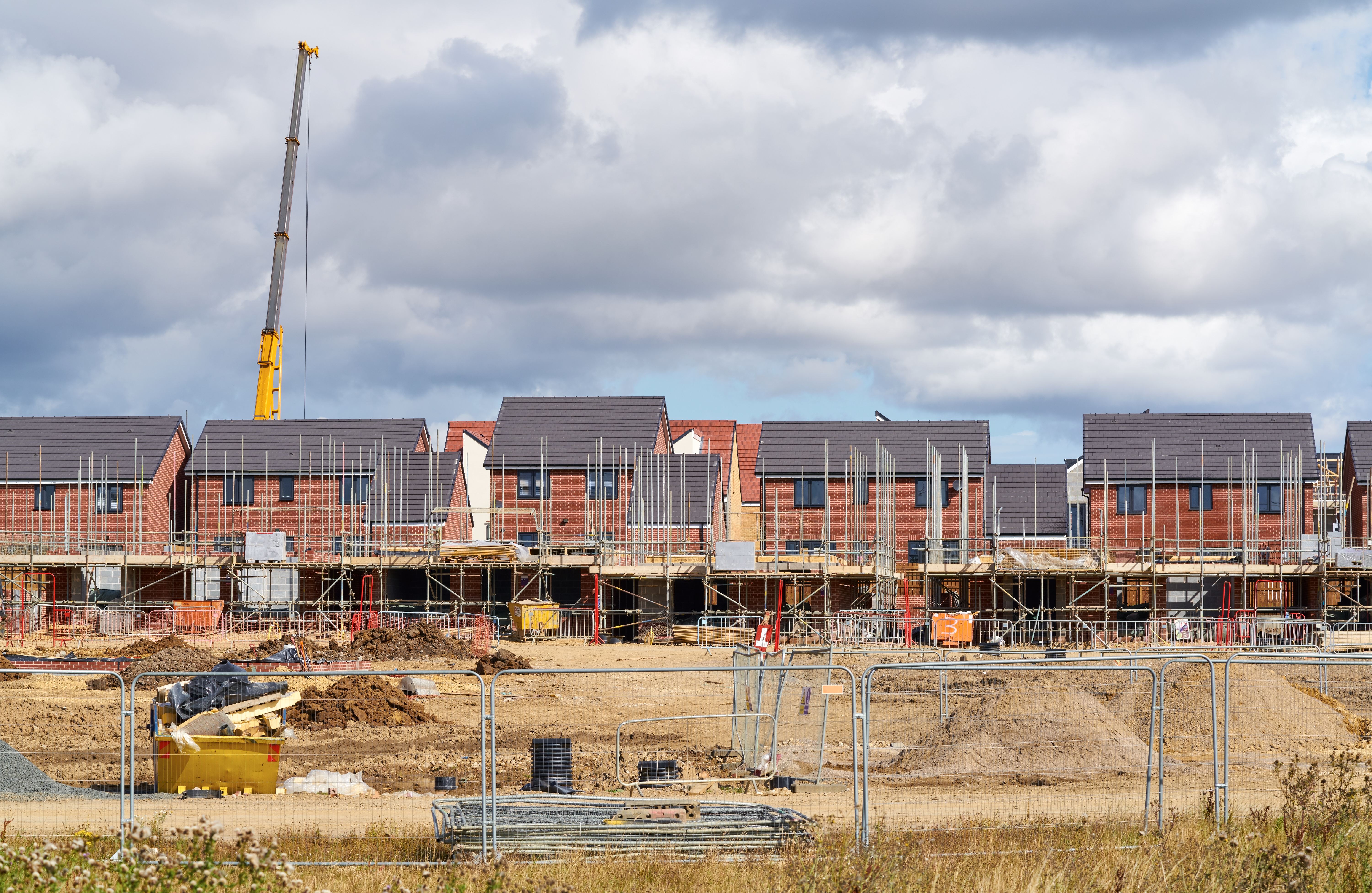

Sir Oliver Letwin’s Independent Review of Build Out has had a significant impact on housing policy over the last four years. But are the review’s assumptions correct? Within this article, Kathryn Bowers, a surveyor in our Leeds office, considers this essential question. Kathryn’s Master's thesis led to a significant piece of research on whether the recommendation for greater variety adequately addresses housing need.
The Ministry of Housing, Communities & Local Government’s solution was to accelerate housing delivery assumes that housing can be achieved through large-scale development, such as new settlements and significant extensions to existing villages and towns. But do larger land allocations accelerate delivery, or does the homogeneity of a single large development hinder build out rates?
The review’s research was limited to only 15 large residential developments, 14 of which were in London and the south east, with only a solitary example from the north.
We undertook a detailed empirical study of local authorities in Leeds, York, Harrogate and Barnsley, using house sales data over an 11-year period. The research considered 711 developments, comprising just under 22,000 unit sales.
The results confirmed wide differences between the four areas, in terms of the number of units sold, average size of developments, nominal and relative number of new build units sold per month and diversity of house types and tenures.
If Letwin is correct, a positive correlation should exist between the range of properties available and absorption rates. However, the opposite was observed: the less diverse the range, the faster the absorption rate.
But importantly our study found that an increased number of small sites in a greater variety of locations accelerates absorption rates, indicating that this more nuanced interpretation of Letwin’s recommendations is in fact the solution. This could be facilitated by measures to enable more small housebuilders to enter the market, such as the recent revisions to the National Planning Policy Framework (NPPF) which introduce the requirement for LPAs to identify 10% of their housing requirement on sites no larger than one hectare.
The research also finds that increased diversification of tenure, including more affordable housing, would benefit the speed of build-out and absorption. However, it is not necessarily the ‘evenness’ of a development that allows for accelerated absorption rates, but building an appropriate mix to meet the demands in a specific location.
Does the recommendation for greater variety adequately address housing need?
“The trend for high absorption rates in areas of low variety is unlikely to have occurred by chance.”
“It is not necessarily the ‘evenness’ of a development that allows for accelerated absorption rates, but building an appropriate mix to meet the demands in a specific location.”
"An increased number of small sites in a greater variety of locations accelerates absorption rates."
Kathryn Bowers
Surveyor
Kathryn has been part of our development team in Leeds since 2018 and specialises in providing residential development agency services to landowners across Yorkshire. Kathryn has been involved in dealing with both commercial property and residential development land and has worked on various land disposals under conditional contracts, option and promotion agreements.
About our professionals
Sign up to receive content like this directly to your inbox













• Too few LPAs are planning for the homes they need
• House building is too slow
• Construction is too reliant on a small number of big players
In York, where there is lack of an adopted Local Plan which has led to limited new development, demand has remained high. Leeds, in contrast, has an adopted Local Plan, a Core Strategy, and a 5-Year Housing Land Supply, facilitating a high number and diverse range, type and tenure of new build units. Leeds recorded slower sales than York, but has been more successful in meeting housing need.
In my opinion, the trend for high absorption rates in areas of low variety is unlikely to have occurred by chance. Clearly in York, the absence of a Local Plan, and therefore and absence of adequate land supply, was a major factor. Others include size, number of bedrooms and bathrooms, build quality, parking, access and location. These, and other variables which may affect the absorption rate - including local economies, employment rates and mortgage availability - did not feature in this research but are worth further exploration.
In summary, the study has revealed that Letwin’s generalised theory, based on data from development sites predominantly in the south of England, does not hold across the UK. Absorption rates are influenced by highly variegated endogenous and exogenous factors, relating to planning policy, demand, need and land supply; thus, the success of policy measures and interventions to accelerate absorption rates will vary between locations. There is undoubtedly a lack of flexibility within the NPPF to adapt to local markets. The opportunity to address this is the imminent Planning Bill, and bearing in mind some watering-down of the policies initially expressed in the Planning White Paper Planning for the Future, it is important that this complex issue is not overlooked.
In 2017, the Housing White Paper, Fixing Our Broken Housing Market admitted that the housing market was ‘broken’ and identified three fundamental problems:
Sir Oliver Letwin’s Independent Review of Build Out aimed to explain the gap between housing completions and the amount of land allocated or permissioned for housing in areas of high demand. It confirmed that volume housebuilders, in maintaining a good financial return and steady cashflow, build at rates best absorbed by the market. He stated that in order to accelerate that rate, a more diverse product range should be built, to attract a wider range of consumers.
This led to the study undertaken by myself and lecturers at Northumbria University which aimed to test Letwin’s claim by analysing the relationship between absorption rates and diversity of house types, tenures and size of developments.
































Kathryn Bowers
Surveyor
Kathryn has been part of our development team in Leeds since 2018 and specialises in providing residential development agency services to landowners across Yorkshire. Kathryn has been involved in dealing with both commercial property and residential development land and has worked on various land disposals under conditional contracts, option and promotion agreements.
About our professionals
Sign-up for the latest news

Sign-up for the latest news
